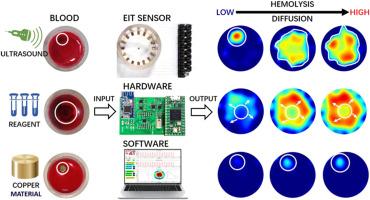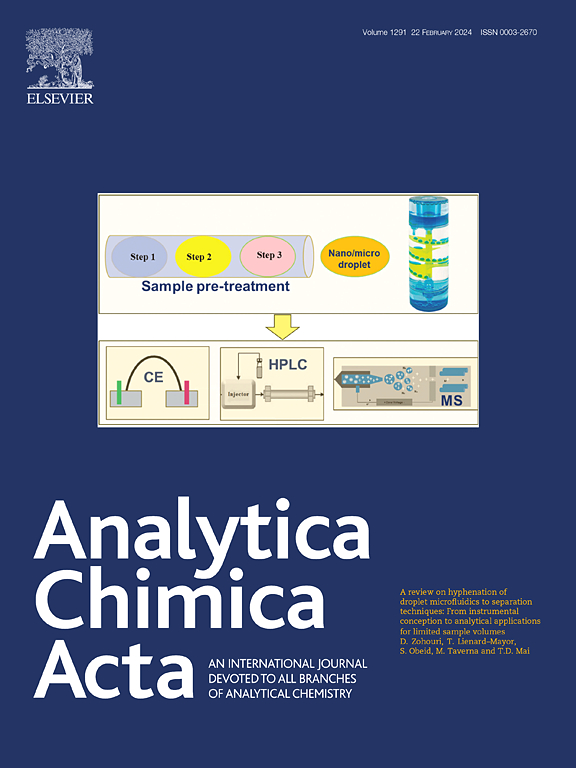Development and evaluation of an electrical impedance tomography (EIT) sensor for real-time monitoring of hemolysis dynamics
IF 5.7
2区 化学
Q1 CHEMISTRY, ANALYTICAL
引用次数: 0
Abstract
Background
Real-time monitoring of hemolysis dynamics is essential for clinical diagnosis, ensuring transfusion safety, and supporting medical device development. Traditional methods such as spectrophotometry have limitations in real-time monitoring capabilities, often posing higher operational costs and restricted temporal resolution.
Results
This study presents an Electrical Impedance Tomography (EIT) sensor designed for real-time monitoring of hemolysis dynamics. The EIT sensor comprises 16 circular electrodes within a cylindrical test chamber, connected to computer-controlled hardware and software for comprehensive data acquisition and analysis. Experimental validation shows that the EIT sensor can effectively monitor and visually display the dynamic process of hemolysis, irrespective of its underlying cause. Results from EIT measurements align closely with those obtained by the conventional spectrophotometric method. Furthermore, the EIT sensor accurately detects and monitors hemolysis in real-time, even when hemolysis is induced by ultrasound, chemical reagents, or a copper-simulated blood-contacting material with a super glue surface coating, within just 20 min of contact with blood.
Significance
This EIT sensor represents a novel approach to hemolysis monitoring, providing valuable insights into hemolytic mechanisms, especially those related to biomaterials application. With its high temporal resolution, low cost, non-invasiveness, and portability, the EIT sensor offers a promising alternative tool for detecting and characterizing hemolysis, with potential applications in fundamental research and clinical practice, such as blood sample collection and long-term preservation.


求助全文
约1分钟内获得全文
求助全文
来源期刊

Analytica Chimica Acta
化学-分析化学
CiteScore
10.40
自引率
6.50%
发文量
1081
审稿时长
38 days
期刊介绍:
Analytica Chimica Acta has an open access mirror journal Analytica Chimica Acta: X, sharing the same aims and scope, editorial team, submission system and rigorous peer review.
Analytica Chimica Acta provides a forum for the rapid publication of original research, and critical, comprehensive reviews dealing with all aspects of fundamental and applied modern analytical chemistry. The journal welcomes the submission of research papers which report studies concerning the development of new and significant analytical methodologies. In determining the suitability of submitted articles for publication, particular scrutiny will be placed on the degree of novelty and impact of the research and the extent to which it adds to the existing body of knowledge in analytical chemistry.
 求助内容:
求助内容: 应助结果提醒方式:
应助结果提醒方式:


